Key takeaways:
- Selective mutism is a complex anxiety disorder, not just shyness, characterized by a fear of speaking in specific social situations.
- Recognizing emotional triggers and practicing mindfulness are crucial strategies for managing anxiety associated with selective mutism.
- Building a supportive network and using effective communication techniques, such as visual aids and active listening, significantly aid in emotional expression.
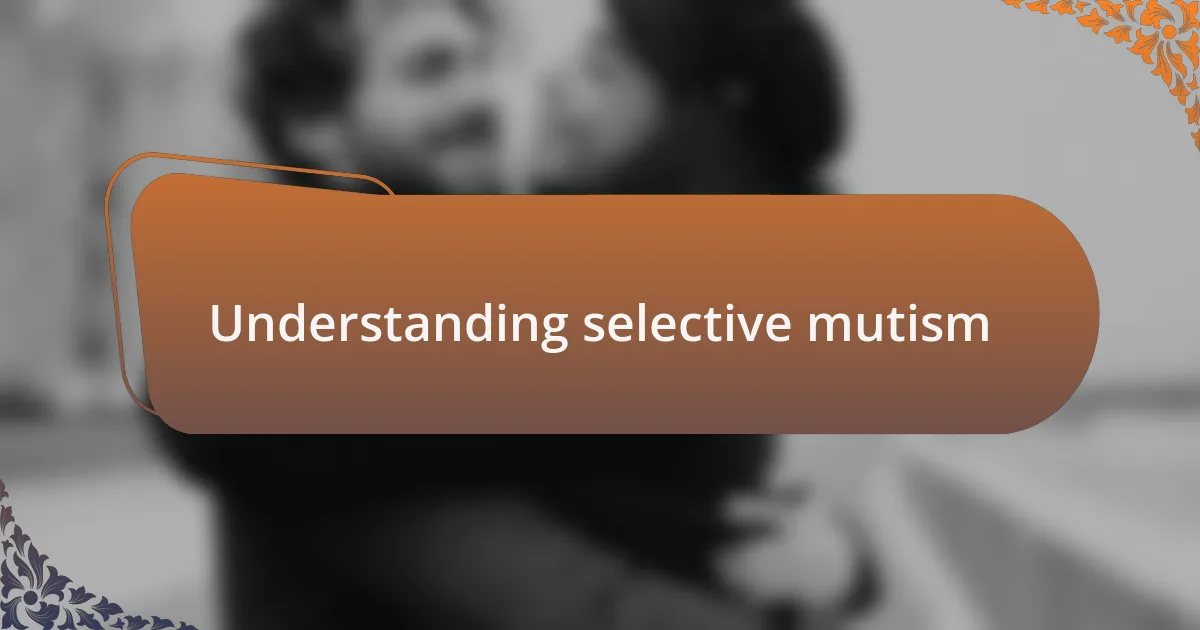
Understanding selective mutism
Selective mutism is a complex anxiety disorder where an individual who is verbally capable fails to speak in certain social situations, often stemming from deep-seated anxiety. I remember when I first noticed this behavior in a friend; she was charming and chatty at home but would freeze in larger gatherings. Have you ever felt that sense of panic just before speaking in front of a crowd? That’s what it can feel like for those struggling with selective mutism.
Understanding selective mutism means recognizing that it’s not simply shyness, but an overwhelming fear that can lead to withdrawal. For instance, I once saw a child who loved to sing in the comfort of their living room but would go mute in music class. This discrepancy can be heartbreaking because their potential gets overshadowed by anxiety, making us wonder how we can better support them.
Often, those experiencing selective mutism may feel trapped in their silence, longing to express themselves but feeling an immense weight holding them back. In my experience, one key aspect of overcoming these feelings lies in creating a safe and supportive environment. Wouldn’t it be incredible if we could all foster spaces where individuals feel free to share their thoughts without fear of judgment?
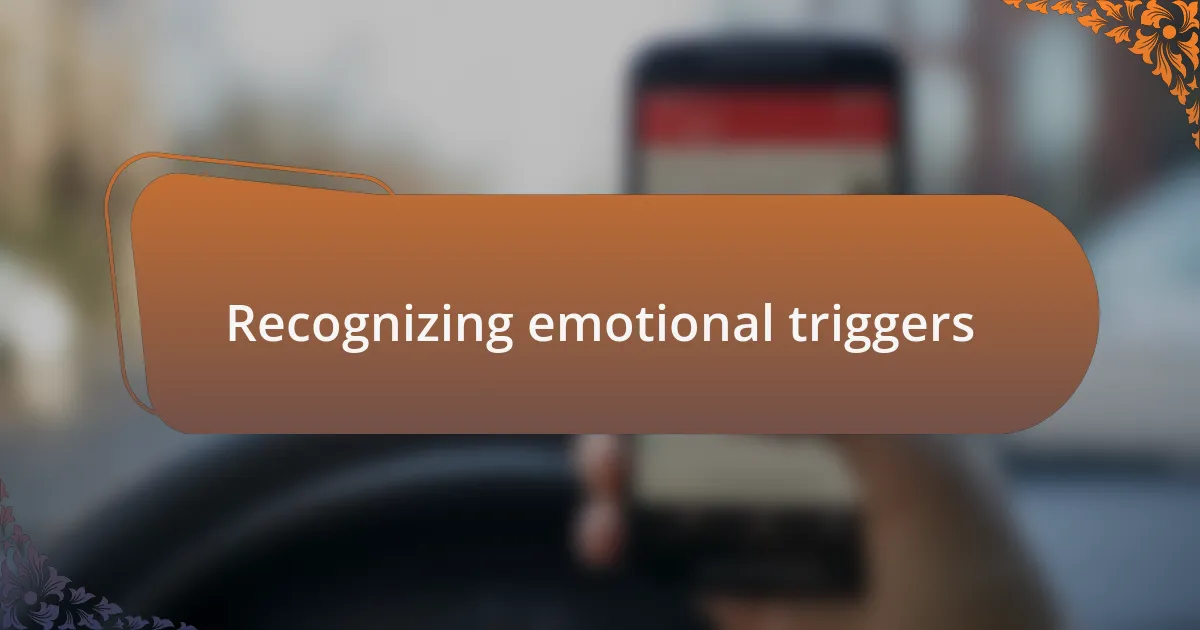
Recognizing emotional triggers
Recognizing emotional triggers is essential for anyone dealing with selective mutism. I vividly recall an instance when I was in a group setting, and the smallest comment about my past would send my heart racing. Have you ever noticed how specific phrases or situations can create an emotional response that feels overwhelming? Identifying these triggers helps in managing reactions more effectively.
There are times when I’ve realized that certain environments, like busy cafes or crowded rooms, heighten my anxiety. It’s fascinating how a simple change in setting can evoke fear, even when I know I’m safe. Understanding these emotional triggers allows me to anticipate my reactions, giving me the power to prepare and cope with my feelings.
Through my journey, I’ve learned to jot down moments that cause me stress. By doing this, I’ve been able to see patterns in what triggers my emotions most. If I encounter a tough situation, I can ask myself: “Is this a familiar trigger?” Recognizing these patterns allows me to engage with my feelings proactively, rather than being caught off guard.
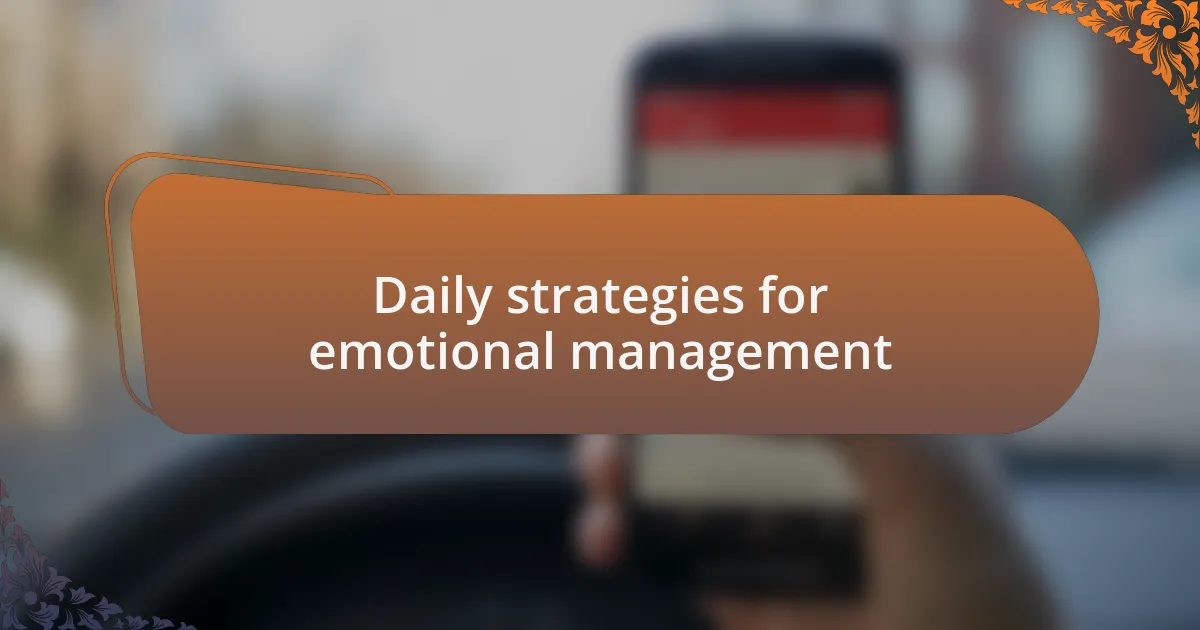
Daily strategies for emotional management
When it comes to daily emotional management, I find that practicing mindfulness really helps me stay grounded. For example, I’ve started using short breathing exercises when I feel anxiety creeping in. Have you ever tried simply taking a moment to focus on your breath? It’s amazing how such a small shift can bring clarity amidst the chaos.
One strategy I often use is maintaining a journal to capture my feelings and thoughts. I remember one evening feeling particularly overwhelmed and just writing down everything that was in my head. It was cathartic—almost like releasing pressure from a balloon. Reflecting on those entries later has shown me how certain emotions come and go, reminding me that they don’t have to control me.
I’ve also discovered the power of having a go-to support person. When emotions get intense, reaching out to someone who understands makes a significant difference. Just the other day, I called a close friend, and her willingness to listen made my burdens feel lighter. Have you considered who you can turn to during difficult times? Having that support system can be a vital lifeline when navigating the ups and downs of emotional management.
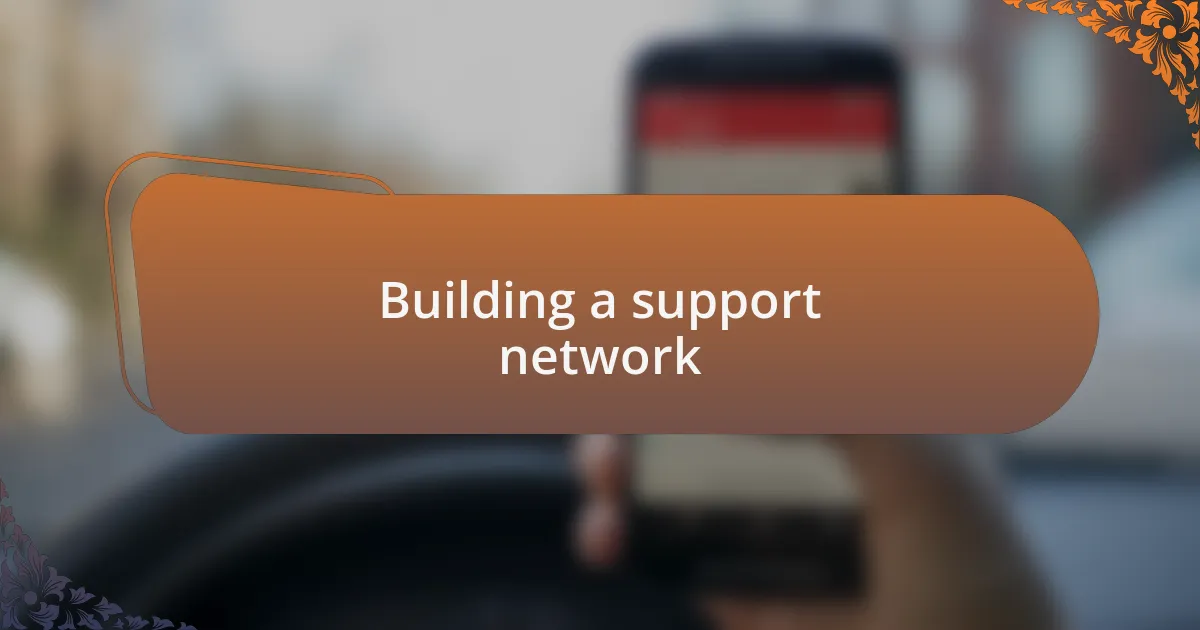
Building a support network
It’s incredible how much sharing experiences can lighten our emotional load. A few months ago, I joined a local support group specifically for those grappling with selective mutism. Listening to others articulate their struggles reminded me I’m not alone, and it sparked conversations that I never thought I could have in a group setting. Have you found a community that resonates with your feelings?
Building a support network doesn’t just mean finding people who share similar experiences; it’s also about connecting with those who can offer different perspectives. I once had a family member who, despite not fully understanding my challenges, made an effort to learn about selective mutism. Their genuine curiosity helped me feel more accepted and empowered to express myself. Have you thought about reaching out to those outside your usual circle for support?
Finding supportive relationships takes effort and vulnerability, but the results can be transformative. I vividly recall how difficult it felt to open up to my therapist initially, but over time, their encouragement and understanding became a safe space for me to process my emotions. Have you ever considered how meaningful it is to invest time in nurturing these relationships? Building that support network can truly create a cushion during emotional turbulence.
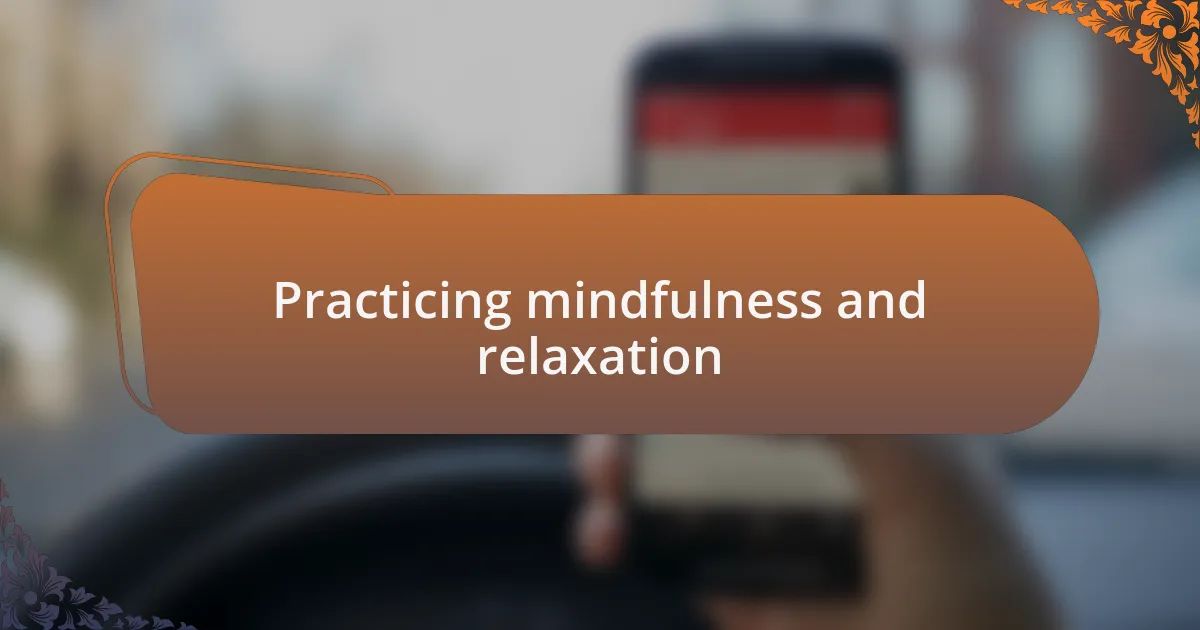
Practicing mindfulness and relaxation
Practicing mindfulness and relaxation can be a game-changer for managing the overwhelming emotions associated with selective mutism. I remember a time when I stumbled upon guided meditation. Just a few minutes of focused breathing transformed my panic into calm. Have you tried dedicating even a few moments each day to clear your mind and center yourself?
In my experience, incorporating simple mindfulness techniques throughout the day has made a significant difference. Whether it’s taking a short walk while paying attention to my surroundings or listening to calming music, these small acts allow me to reconnect with my feelings without becoming overwhelmed. Have you ever noticed how a moment of stillness can shift your perspective?
Relaxation isn’t just about moments of quiet; it’s equally about finding awareness in daily life. A while back, during a particularly stressful week, I began practicing mindful eating. Savoring each bite and paying attention to flavors helped ground me in the present and eased my anxiety. How often do you take the time to appreciate simple pleasures in your life?
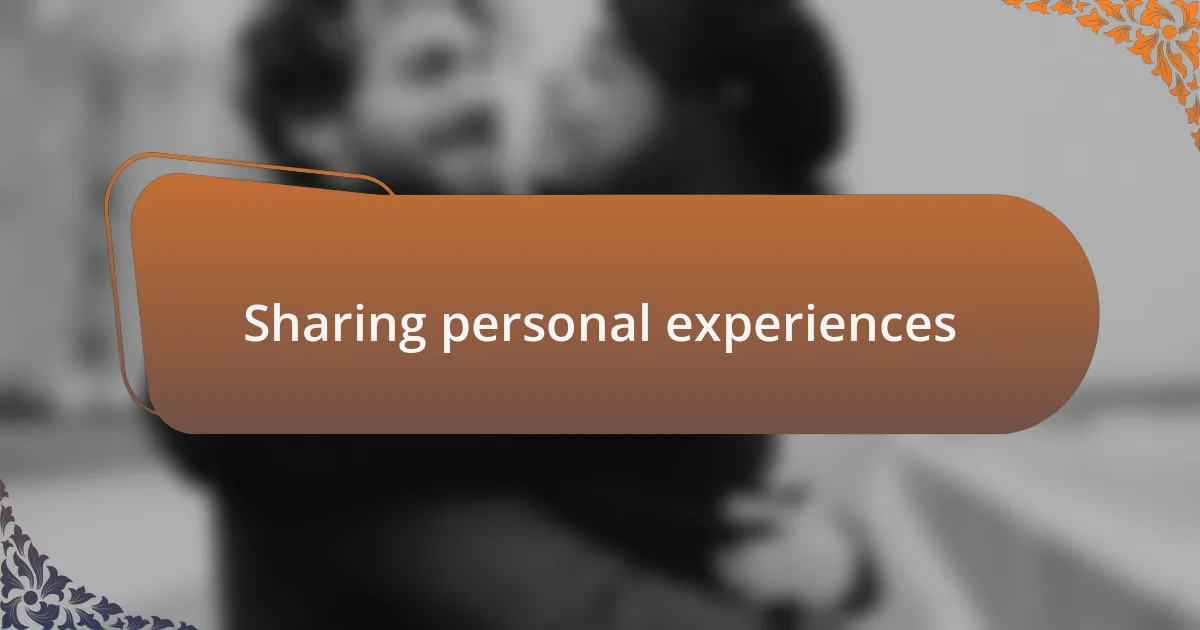
Sharing personal experiences
Sharing personal experiences with managing emotions can be incredibly validating. I recall a day when I felt particularly isolated due to my selective mutism. In that moment, I decided to journal my feelings, and as I wrote, I found clarity in my anxieties. Have you ever experienced the power of putting your thoughts on paper?
Another time, during a community event, I felt the weight of silence around me. Instead of retreating, I chose to connect with a friend who understood my struggles. We shared our similar experiences, and the relief was palpable. Have you found a support system that resonates with your journey?
On particularly tough days, reaching out has often proved to be a lifeline. I remember texting a close friend during a challenging moment; just knowing someone was there to listen provided comfort. Have you ever realized how sharing your thoughts can lighten the emotional load?

Creating effective communication techniques
Creating an effective way to communicate with others has been a game changer for me. I once tried using visual aids, like a emotions chart, to express how I felt when words escaped me. It was incredible to see people’s reactions as they genuinely understood my emotions without me having to say a word. Have you explored different forms of expression that might unlock your voice?
Another strategy that has helped me is practicing active listening. There was a time when a friend spoke about their own experiences, and by simply nodding and responding with affirmations, I felt more connected. It made me realize how important it is to foster a two-way communication channel; when you listen, others often feel encouraged to share their thoughts. Have you ever found that listening opens doors to deeper conversations?
Additionally, I’ve grown fond of using technology as a tool. Recently, I started using voice recording apps to articulate my thoughts when face-to-face conversations felt daunting. Hearing my own voice helped me build confidence for future interactions. Have you ever considered how technology could bridge the gap in your communication efforts?